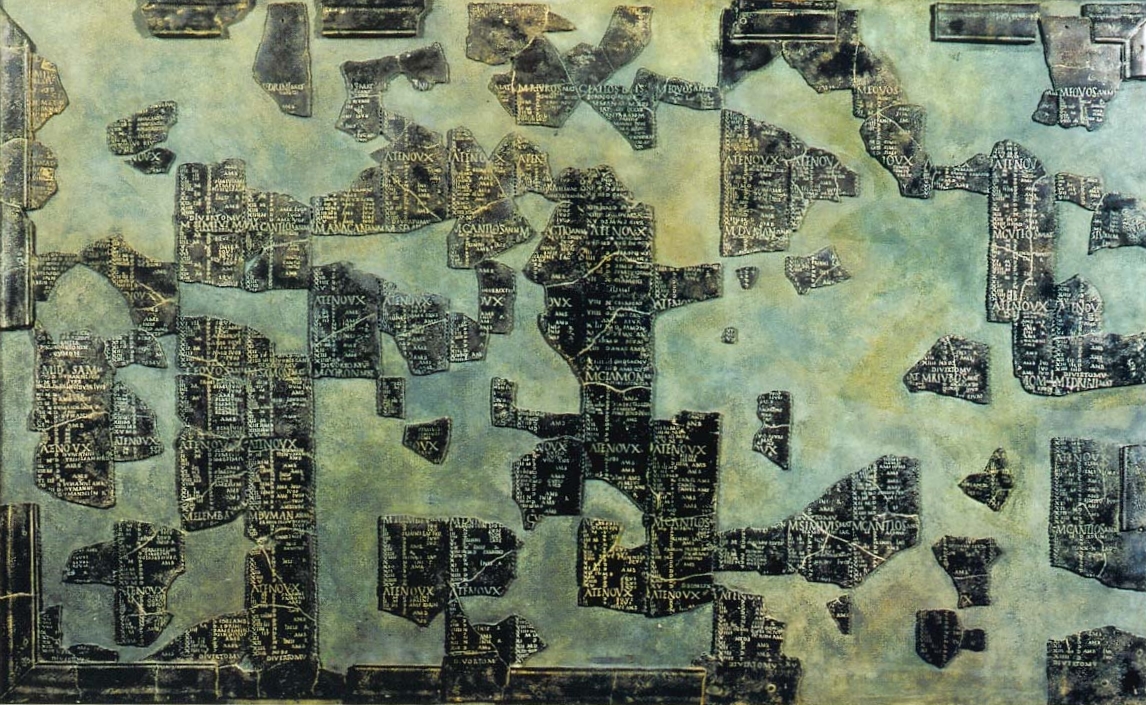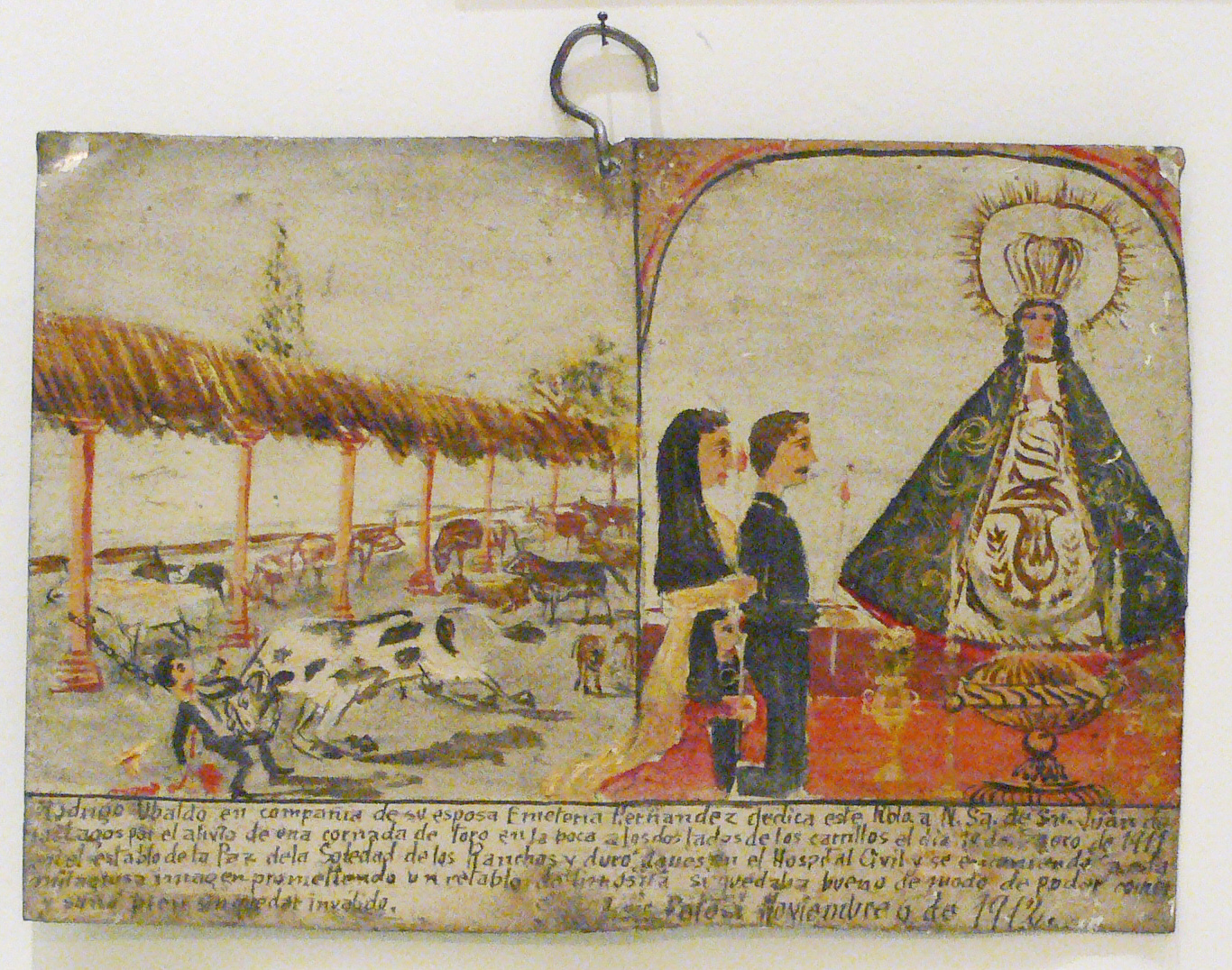|
Apollo Moritasgus
Moritasgus is a Celtic epithet for a healing god found in four inscriptions at Alesia. In two inscriptions, he is identified with the Greco-Roman god Apollo. His consort was the goddess Damona. Etymology The name ''Moritasgus'', shared by a 1st-century BC ruler of the Senones, has been analyzed variously. It probably means "Great Badger" or "Sea Badger." The European badger produced a secretion used in Gaulish medicaments, hence a possible connection with a healing god. Shrine in Alesia Alesia was an oppidum of the Celtic Mandubii in present-day Burgundy. A dedication to the gods alludes to the presence of a shrine at the curative spring, where sick pilgrims could bathe in a sacred pool. The sanctuary itself, located near the eastern gate of the town just outside the city wall, was impressive, with baths and a temple. In addition, there were porticoes, where the sick possibly slept, hoping for divine visions and cures. Numerous votive objects were dedicated to Moritasgu ... [...More Info...] [...Related Items...] OR: [Wikipedia] [Google] [Baidu] |
Gaulish Language
Gaulish was an ancient Celtic language spoken in parts of Continental Europe before and during the period of the Roman Empire. In the narrow sense, Gaulish was the language of the Celts of Gaul (now France, Luxembourg, Belgium, most of Switzerland, Northern Italy, as well as the parts of the Netherlands and Germany on the west bank of the Rhine). In a wider sense, it also comprises varieties of Celtic that were spoken across much of central Europe ("Noric"), parts of the Balkans, and Anatolia (" Galatian"), which are thought to have been closely related. The more divergent Lepontic of Northern Italy has also sometimes been subsumed under Gaulish. Together with Lepontic and the Celtiberian spoken in the Iberian Peninsula, Gaulish helps form the geographic group of Continental Celtic languages. The precise linguistic relationships among them, as well as between them and the modern Insular Celtic languages, are uncertain and a matter of ongoing debate because of their sparse at ... [...More Info...] [...Related Items...] OR: [Wikipedia] [Google] [Baidu] |
European Badger
The European badger (''Meles meles''), also known as the Eurasian badger, is a badger species in the family Mustelidae native to almost all of Europe. It is classified as least concern on the IUCN Red List as it has a wide range and a large stable population size, and is thought to be increasing in some regions. Several subspecies are recognized with the nominate subspecies (''M. m. meles'') predominating in most of Europe. In Europe, where no other badger species commonly occurs, it is generally just called the "badger". The European badger is a powerfully built, black, white, brown, and grey animal with a small head, a stocky body, small, black eyes, and short tail. Its weight varies, being 7–13 kg (15–29 lb) in spring, but building up to 15–17 kg (33–37 lb) in autumn before the winter sleep period. It is nocturnal and is a social, burrowing animal that sleeps during the day in one of several setts in its territorial range. These burrows have multi ... [...More Info...] [...Related Items...] OR: [Wikipedia] [Google] [Baidu] |
Milagro (votive)
Milagros (also known as an '' ex-voto'' or ''dijes'' or ''promesas'') are religious folk charms that are traditionally used for healing purposes and as votive offerings in Mexico, the southern United States, other areas of Latin America, and parts of the Iberian peninsula. They are frequently attached to altars, shrines, and sacred objects found in places of worship, and they are often purchased in churches and cathedrals, or from street vendors. Milagros come in a variety of shapes and dimensions and are fabricated from many different materials, depending on local customs. For example, they might be nearly flat or fully three-dimensional; and they can be constructed from gold, silver, tin, lead, wood, bone, or wax. In Spanish, the word ''milagro'' literally means miracle or surprise. History The use of milagros is a folk custom in parts of North, Central, and South America traceable to ancient Iberians who inhabited the coastal regions of Spain. The use of milagros a ... [...More Info...] [...Related Items...] OR: [Wikipedia] [Google] [Baidu] |
Ex-voto
An ex-voto is a votive offering to a saint or to a divinity; the term is usually restricted to Christian examples. It is given in fulfillment of a vow (hence the Latin term, short for ''ex voto suscepto'', "from the vow made") or in gratitude or devotion. Definition Ex-votos are placed in a church or chapel where the worshiper seeks grace or wishes to give thanks. The destinations of pilgrimages often include shrines decorated with ex-votos. Ex-votos can take a wide variety of forms. They are not only intended for the helping figure, but also as a testimony to later visitors of the received help. As such they may include texts explaining a miracle attributed to the helper, or symbols such as a painted or modeled reproduction of a miraculously healed body part, or a directly related item such as a crutch given by a person formerly lame. There are places where a very old tradition of depositing ex-votos existed, such as Abydos in ancient Egypt. Ex-voto paintings Especially in ... [...More Info...] [...Related Items...] OR: [Wikipedia] [Google] [Baidu] |
Votive
A votive offering or votive deposit is one or more objects displayed or deposited, without the intention of recovery or use, in a sacred place for religious purposes. Such items are a feature of modern and ancient societies and are generally made in order to gain favor with supernatural forces. While some offerings were apparently made in anticipation of the achievement of a particular wish, in Western cultures from which documentary evidence survives it was more typical to wait until the wish has been fulfilled before making the offering, for which the more specific term ex-voto may be used. Other offerings were very likely regarded just as gifts to the deity, not linked to any particular need. In Buddhism, votive offering such as construction of stupas was a prevalent practice in Ancient India, an example of which can be observed in the ruins of the ancient Vikramshila University and other contemporary structures. Votive offerings have been described in historical Roman e ... [...More Info...] [...Related Items...] OR: [Wikipedia] [Google] [Baidu] |
Portico
A portico is a porch leading to the entrance of a building, or extended as a colonnade, with a roof structure over a walkway, supported by columns or enclosed by walls. This idea was widely used in ancient Greece and has influenced many cultures, including most Western cultures. Some noteworthy examples of porticos are the East Portico of the United States Capitol, the portico adorning the Pantheon in Rome and the portico of University College London. Porticos are sometimes topped with pediments. Palladio was a pioneer of using temple-fronts for secular buildings. In the UK, the temple-front applied to The Vyne, Hampshire, was the first portico applied to an English country house. A pronaos ( or ) is the inner area of the portico of a Greek or Roman temple, situated between the portico's colonnade or walls and the entrance to the '' cella'', or shrine. Roman temples commonly had an open pronaos, usually with only columns and no walls, and the pronaos could be as lon ... [...More Info...] [...Related Items...] OR: [Wikipedia] [Google] [Baidu] |
Burgundy (region)
Burgundy (; french: link=no, Bourgogne ) is a historical territory and former Regions of France, administrative region and province of east-central France. The province was once home to the Duke of Burgundy, Dukes of Burgundy from the early 11th until the late 15th century. The capital of Dijon was one of the great European centres of art and science, a place of tremendous wealth and power, and Western Monasticism. In early Modern Europe, Burgundy was a focal point of courtly culture that set the fashion for European royal houses and their court. The Duchy of Burgundy was a key in the transformation of the Middle Ages toward early modern Europe. Upon the 9th-century partitions of the Kingdom of Burgundy, the lands and remnants partitioned to the Kingdom of France were reduced to a ducal rank by King Robert II of France in 1004. The House of Burgundy, a cadet branch of the House of Capet, ruled over a territory that roughly conformed to the borders and territories of the modern ... [...More Info...] [...Related Items...] OR: [Wikipedia] [Google] [Baidu] |
Mandubii
The Mandubii (Gaulish: *''Mandubioi'') were a small Gallic tribe dwelling near their chief town Alesia, in modern Côte-d'Or, during the Iron Age and the Roman period. Name An ''oppidum Mandubiorum'' is mentioned by Caesar (mid-1st c. BC), and the tribe is designated as ''Mandoubíōn'' (Μανδουβίων) by Strabo (early 1st c. AD)., s.v. ''Mandubii''. The ethnonym ''Mandubii'' is a latinized form of Gaulish *''Mandubioi'' (sing. *''Mandubios''). It is generally seen as stemming from the root ''mandu-'' ('pony'). Alternatively, Pierre-Yves Lambert has proposed to compare the name with the Welsh ''mathru'' ('trample upon'). The second element may be related to the second element of the vulgar Latin ''vidubium'' 'billhook' (a loan from Gaulish) and mean 'beaters' or 'strikers'. Geography The territory of the Mandubii was located in the Haux-Aixois region, between the settlements of Alesia in the north, Blessey in the east, Braux in the west, and Sombernon in the southe ... [...More Info...] [...Related Items...] OR: [Wikipedia] [Google] [Baidu] |
Celts
The Celts (, see pronunciation for different usages) or Celtic peoples () are. "CELTS location: Greater Europe time period: Second millennium B.C.E. to present ancestry: Celtic a collection of Indo-European peoples. "The Celts, an ancient Indo-European people, reached the apogee of their influence and territorial expansion during the 4th century bc, extending across the length of Europe from Britain to Asia Minor."; . " e Celts, were Indo-Europeans, a fact that explains a certain compatibility between Celtic, Roman, and Germanic mythology."; . "The Celts and Germans were two Indo-European groups whose civilizations had some common characteristics."; . "Celts and Germans were of course derived from the same Indo-European stock."; . "Celt, also spelled Kelt, Latin Celta, plural Celtae, a member of an early Indo-European people who from the 2nd millennium bce to the 1st century bce spread over much of Europe."; in Europe and Anatolia, identified by their use of Celtic langu ... [...More Info...] [...Related Items...] OR: [Wikipedia] [Google] [Baidu] |
Oppidum
An ''oppidum'' (plural ''oppida'') is a large fortified Iron Age settlement or town. ''Oppida'' are primarily associated with the Celtic late La Tène culture, emerging during the 2nd and 1st centuries BC, spread across Europe, stretching from Britain and Iberia in the west to the edge of the Hungarian plain in the east. These settlements continued to be used until the Romans conquered Southern and Western Europe. Many subsequently became Roman-era towns and cities, whilst others were abandoned. In regions north of the rivers Danube and Rhine, such as most of Germania, where the populations remained independent from Rome, ''oppida'' continued to be used into the 1st century AD. Definition is a Latin word meaning 'defended (fortified) administrative centre or town', originally used in reference to non-Roman towns as well as provincial towns under Roman control. The word is derived from the earlier Latin , 'enclosed space', possibly from the Proto-Indo-European , 'occu ... [...More Info...] [...Related Items...] OR: [Wikipedia] [Google] [Baidu] |
Name And Badger Lore
A name is a term used for identification by an external observer. They can identify a class or category of things, or a single thing, either uniquely, or within a given context. The entity identified by a name is called its referent. A personal name identifies, not necessarily uniquely, a ''specific'' individual human. The name of a specific entity is sometimes called a proper name (although that term has a philosophical meaning as well) and is, when consisting of only one word, a proper noun. Other nouns are sometimes called "common names" or (obsolete) "general names". A name can be given to a person, place, or thing; for example, parents can give their child a name or a scientist can give an element a name. Etymology The word ''name'' comes from Old English ''nama''; cognate with Old High German (OHG) ''namo'', Sanskrit (''nāman''), Latin '' nomen'', Greek (''onoma''), and Persian (''nâm''), from the Proto-Indo-European (PIE) ''*h₁nómn̥''. Outside Indo-European, ... [...More Info...] [...Related Items...] OR: [Wikipedia] [Google] [Baidu] |
Commentarii De Bello Gallico
''Commentarii de Bello Gallico'' (; en, Commentaries on the Gallic War, italic=yes), also ''Bellum Gallicum'' ( en, Gallic War, italic=yes), is Julius Caesar's firsthand account of the Gallic Wars, written as a third-person narrative. In it Caesar describes the battles and intrigues that took place in the nine years he spent fighting the Celtic and Germanic peoples in Gaul that opposed Roman conquest. The "Gaul" that Caesar refers to is ambiguous, as the term had various connotations in Roman writing and discourse during Caesar's time. Generally, Gaul included all of the regions primarily inhabited by Celts, aside from the province of Gallia Narbonensis (modern-day Provence and Languedoc-Roussillon), which had already been conquered in Caesar's time, therefore encompassing the rest of modern France, Belgium, Western Germany, and parts of Switzerland. As the Roman Republic made inroads deeper into Celtic territory and conquered more land, the definition of "Gaul" shifted ... [...More Info...] [...Related Items...] OR: [Wikipedia] [Google] [Baidu] |






